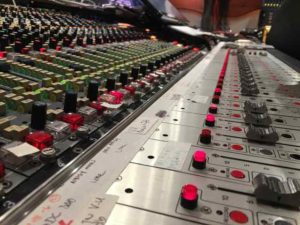- in Engineering by Bobby Owsinski
- |
- 3 comments
The Magic Frequencies For EQing Mix Elements
 When it comes to EQing, there are certain frequencies that seem predominant for every instrument. Many call them the magic frequencies, because they do tend to work most of the time. Here’s a chart of those frequencies from the latest edition of my Mixing Engineer’s Handbook.
When it comes to EQing, there are certain frequencies that seem predominant for every instrument. Many call them the magic frequencies, because they do tend to work most of the time. Here’s a chart of those frequencies from the latest edition of my Mixing Engineer’s Handbook.
Remember that using the magic frequencies might make an instrument or voice sound dynamite on its own when soloed, but then it might not fit in the mix properly. That’s why it’s best to listen against other instruments when adding or subtracting EQ. Also remember than every song is different because the players, arrangement, recording environment, players and feel is different, which will greatly influence your EQ decisions.
| Instrument | Magic Frequencies |
| Bass guitar | Bottom at 50 to 80Hz, attack at 700Hz, snap at 2.5kHz |
| Kick drum | Bottom at 80 to 100Hz, hollowness at 400Hz, point at 3k to 5kHz |
| Snare | Fatness at 120 to 240Hz, point at 900Hz, crispness at 5kHz, snap at 10kHz |
| Rack Toms | Fullness at 240 to 500Hz, attack at 5 to 7kHz |
| Floor Toms | Fullness at 80Hz, attack at 5kHz |
| Hi-hat and cymbals | Clang at 200Hz, sparkle at 8k to 10kHz |
| Electric guitar | Fullness at 240 to 500Hz, presence at 1.5 to 2.5kHz, attenuate at 1kHz for 4 × 12 cabinet sound |
| Acoustic guitar | Fullness at 80Hz, body at 240Hz, presence at 2k to 5kHz |
| Organ | Fullness at 80Hz, body at 240Hz, presence at 2 to 5kHz |
| Piano | Fullness at 80Hz, presence at 3k to 5kHz, honky tonk at 2.5kHz |
| Horns | Fullness at 120Hz, piercing at 5kHz |
| Voice | Fullness at 120Hz, boomy at 240Hz, presence at 5kHz, sibilance at 4k to 7kHz, air at 10k to 15kHz |
| Strings | Fullness at 240Hz, scratchy at 7k to 10kHz |
| Conga | Ring at 200Hz, slap at 5kHz |

